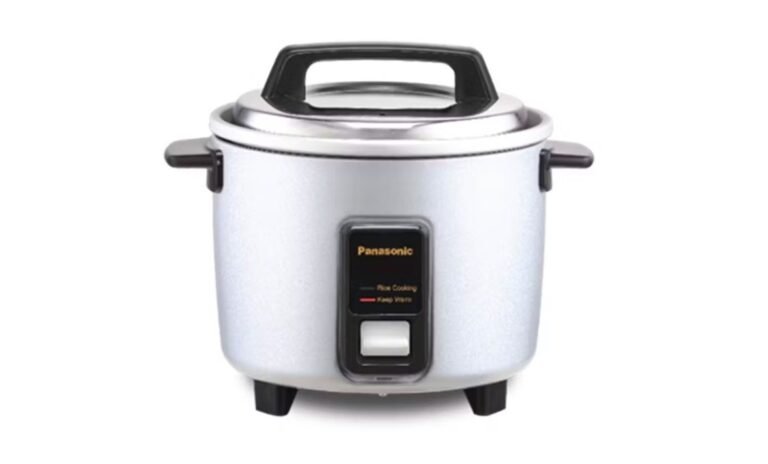When it comes to preparing rice, households around the world have relied on various methods to achieve the perfect texture and flavor. Two popular techniques stand out—using a rice cooker and the traditional pot cooking method. Each has its strengths and specific advantages based on convenience, taste, and efficiency. Deciding between the two largely depends on individual preferences, kitchen habits, and the level of precision required in cooking. Let’s explore the differences between these methods and understand which one might suit your lifestyle best.
The Basics of Rice Cooker Cooking
A rice cooker is an electrical appliance specifically designed to simplify and automate the process of cooking rice. With the press of a button, it takes care of heating, timing, and controlling the cooking process. This advanced gadget has gained popularity over the years due to its ease of use and consistent results. Most rice cookers come equipped with features like a non-stick inner pot, quick cook modes, and even the ability to keep your rice warm for hours.
Rice cookers are a game changer for busy individuals or multitasking cooks. The device handles everything in a hands-free manner while you focus on other tasks. This makes it ideal for anyone juggling a busy lifestyle or preparing multiple dishes at the same time. Additionally, rice cookers have evolved to include features beyond cooking basic rice, such as steaming vegetables, making porridge, or creating fluffy quinoa.
Key Advantages of Rice Cookers
- Precision and Consistency
Rice cookers are designed to measure water and rice ratios perfectly, ensuring consistent results every time. You don’t have to worry about overcooking or burning your rice—a feature particularly appreciated by beginners.
- Ease of Use
Operating a rice cooker is as simple as rinsing your rice, pouring the right amount of water, and pressing a button. Once it’s set, you don’t need to stir or monitor the process.
- Time-Saving Features
With advanced models offering quick cooking options or timers, rice cookers save you valuable time, especially during busy weekdays.
- Versatility
Many modern rice cookers double as multi-cookers, allowing you to prepare a variety of dishes beyond rice, including soups, steamed vegetables, and even cakes.
Traditional Pot Cooking Overview
On the other hand, traditional pot cooking relies on a stovetop and involves manually managing the heat and water levels. This centuries-old method has been cherished by purists who believe it delivers superior flavor and a more customizable cooking experience.
Using a pot allows for direct engagement with the cooking process. You control the temperature, adjust timings, and experiment with techniques to suit your desired outcome. This hands-on approach is undoubtedly rewarding for home chefs who enjoy being actively involved in the preparation process.
Advantages of Traditional Pot Cooking
- Flavor Customization
When cooking rice in a traditional pot, you can infuse additional flavors by adding spices, herbs, or oils directly into the pot.
- Enhanced Texture
Traditional pot cooking allows you to experiment with textures—for instance, achieving a crispy bottom layer of rice known as “tahdig” in Persian cuisine, or “socarrat” in Spanish paella.
- No Need for Extra Equipment
Almost every kitchen already has a pot and a stovetop, making this method accessible without investing in additional appliances.
- Cultural Significance
For many families, cooking rice in a pot is tied to traditional recipes and cooking rituals passed down through generations.
Comparing Rice Cooker and Traditional Pot Cooking
When deciding between a rice cooker and traditional pot cooking, it’s essential to weigh the pros and cons of each method. Here’s a closer look at some key areas of comparison:
1. Convenience
-
-
- Rice Cooker: Extremely convenient; offers a hands-free, automatic process. No need for monitoring or stirring.
- Traditional Pot: Requires constant attention to prevent burning or overcooking.
-
2. Cooking Time
-
-
- Rice Cooker: Generally faster and includes features like quick-cook modes. Some models also use pressure-cooking technology for ultra-fast results.
- Traditional Pot: While it offers control, the process may take slightly longer, especially with novice cooks still learning timing and temperature management.
-
3. Energy Efficiency
-
-
- Rice Cooker: Designed specifically for rice, these appliances are energy efficient and effective without using excessive power.
- Traditional Pot: Cooking on a stovetop might consume more energy, especially if the cooking process requires multiple adjustments.
-
4. Taste and Texture
-
-
- Rice Cooker: Provides consistent textures but may lack the depth of flavor achieved with traditional methods.
- Traditional Pot: Offers superior flavor variety, especially when adding seasoning to enhance the rice’s taste.
-
When to Choose Rice Cooker or Traditional Pot Cooking
Ultimately, your choice will come down to your lifestyle, cooking habits, and culinary goals. If convenience, speed, and consistency top your priority list, investing in a rice cooker is a brilliant decision. It’s particularly suited for those who regularly eat rice or want to explore versatile recipes with one appliance.
On the other hand, if you value hands-on cooking and are often experimenting with traditional culinary techniques, a pot will be your best companion in the kitchen. It enhances your connection to the food and allows you to layer flavors like a true chef.
Final Thoughts
Both rice cookers and traditional pot cooking methods have their unique strengths and appeal. While rice cookers represent the pinnacle of modern convenience, the traditional pot carries memories and cultural significance that resonate with cooking enthusiasts around the globe. The right choice depends on whether you prioritize automation or the artistry of cooking. Whichever method you choose, one thing is certain—perfectly cooked rice is always worth the effort.

